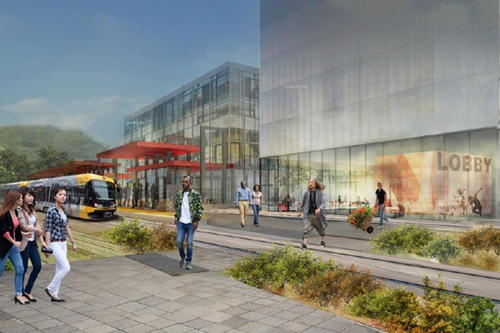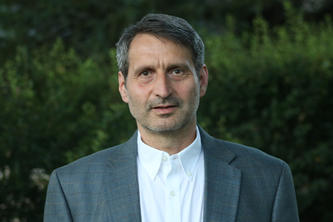
A new report by a team of researchers at the University of Minnesota’s Resilient Communities Project (RCP), funded by Blue Cross and Blue Shield of Minnesota’s Center for Prevention, provides insights into barriers stakeholders face to building healthier, more equitable developments in first-ring suburbs of Minneapolis and St. Paul, and steps to positively influence development decisions moving forward.
The Healthy and Equitable Development Project was developed for over a year and focused on 18 developments within four cities: New Hope, St. Louis Park, Hopkins, and Richfield. It reflects the thoughts of community members, elected officials, city staff, and developers on the problems and opportunities around affordable living and active transportation.
“One of the goals of the Resilient Communities Project is to advance local sustainability on the ground by helping communities move from ideas to implementation,” RCP Director Mike Greco said. “The Healthy and Equitable Development project is a great example of that.”
The highlighted challenges and barriers that first-ring suburbs face include:
- community opposition to active transportation infrastructure and new developments, including market rate and affordable housing;
- meeting the needs and desires of residents who are currently car-dependent while working towards becoming more walkable and bikeable; and
- retrofitting streets with sidewalks—and deciding who will pay for and maintain them.
Although many of these problems may seem intractable, there are ways to move forward. As a result of this report, cities, developers, and other stakeholders will seek to use suggestions and case studies from other communities to overcome currents obstacles in building healthier, more equitable development in the suburbs by focusing on three core areas: community engagement, active living and equity and affordable housing. Sample recommendations from the report include:
Community Engagement
- Build authentic, long-term relationships with community members rather than transactional relationships.
- Engage the community early in the development process rather than after all decisions have been made.
Active Living
- Use demonstrations and temporary installations to help community members understand how biking and walking infrastructure will work, and gather a broader array of perspectives beyond just those of adjacent property owners.
- Work toward equity in pedestrian and bike infrastructure by creating holistic plans for bike/walk networks throughout your community, rather than only building such infrastructure when new development occurs.
Equity and Affordable Housing
- Humanize affordable housing residents and correct misperceptions to reduce fear of the unknown among neighbors.
- Anticipate the conversion of informal affordable housing to market-rate housing, especially in areas well-served by transit, and take proactive steps to protect and support vulnerable residents.
“This report offers a refresh to suburban communities looking for ways to build on their assets and strengths,” said Gretchen Nicholls, a program officer at LISC who was interviewed for the project. “It is especially timely as cities undertake their comprehensive plan updates, reassessing priorities and goals— and offers great ideas to help raise the bar for inner ring suburban communities.”
The full report, fact sheet summaries, and case studies are available at http://z.umn.edu/HEDreport.
This report was funded as part of an ongoing effort by Blue Cross to improve health and advance health equity within communities throughout Minnesota, with the belief that all people, regardless of race, income, zip code or other factors, should have opportunities to live the healthiest lives possible.
- Categories:
- Science and Technology





